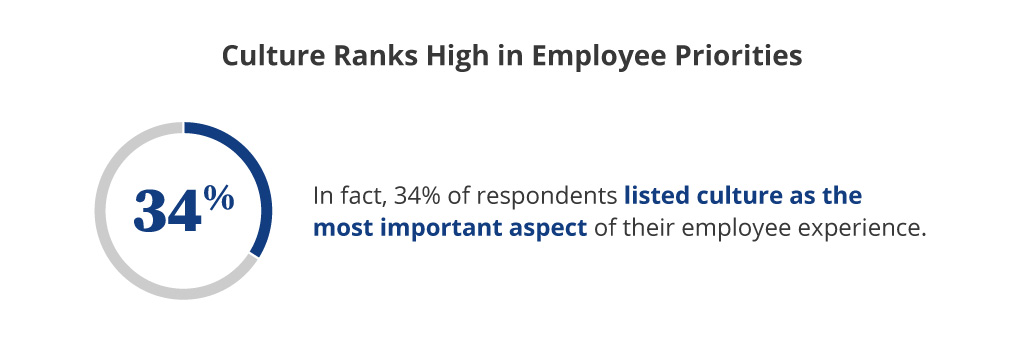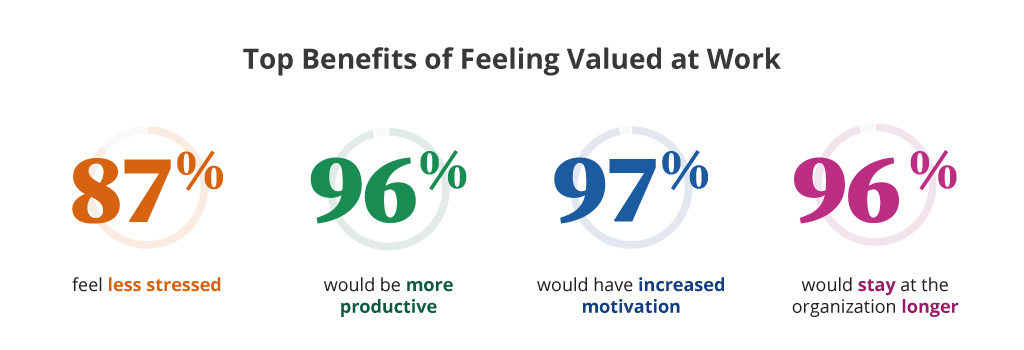Four Common Myths about Your Employees

Aug 22, 2022
We know employees continue to be stressed, frustrated, and disengaged . Who can blame them? From The Great Resignation to the impact of Covid, employees have endured a considerable number of changes over the last few years. According to Gallup’s most recent report, 60% of the workforce is emotionally detached, while 19% report they are actively disengaged from work. They also found that 44% of employees globally reported feeling stressed most of the day. How can organizations effectively tackle these issues? To answer this daunting question, Wiley Workplace Research surveyed thousands of individuals and learned this: The most impactful way to reduce stress and frustration is by nurturing a positive culture where employees are empowered to be the best version of themselves. To get there, let’s break down four misconceptions that leaders and organizations have about employees and their experience.
Myth #1: Not everyone wants to be a leader
While it may be true that not all employees want to be in a formal leadership position, that doesn’t mean they don’t want to be a leader. When we view leadership as skills that can be taught, rather than a quality or characteristic, the possibilities are endless. Everyone can be a leader when given the chance to learn and practice leadership skills. In fact, a recent Wiley Workplace Research survey found that 20% of respondents felt the biggest benefit from leadership training was employee empowerment. Nearly 1/3 said leadership training improved relationships and engagement. What does that look like in a practical sense? Organizations who give employees the skills needed to be successful will also help empower those employees to be leaders in their role.
The bottom line is this: Developing leadership skills at every level is a worthy pursuit.
Myth #2: Pay is the most important priority for employees
While pay is a factor for employees, it is not most important. Employees are more concerned about working in a positive culture.

The truth is that pay can only go so far when there is a negative or toxic work culture. If The Great Resignation highlighted anything, it’s that people want to feel valued, seen, and heard by their employer.
Creating a positive work culture will not only improve engagement and retention, but also business outcomes.
Myth #3: Organizations don’t need to invest in the employee experience
Regardless of their role, today’s employees are stressed, disengaged, and frustrated, which can have a negative impact on performance. Knowing this, organizations need to decide how to best invest in the employee experience. The current Wiley Workplace Research survey found that employees who feel valued as a person by their employer will positively affect business outcomes. Specifically, 87% said they would feel less stressed, with 96% sharing they would be more productive. Additionally, 97% said that feeling valued would increase motivation and 96% said they would stay at the organization longer.

Employees want to feel valued, and organizations and leaders have an opportunity to create a working environment where this happens. Beyond showing employees that they are valued, having leaders who are collaborative, future-focused, and effective communicators will positively affect the employee experience.
Simply put, investing in the employee experience can positively impact the organization and its people.
Myth #4: Employees are resistant to “return” to work
Most of us have heard the adage, "it's not what you say, it's how you say it." The notion that employees are reluctant to return to work is a perfect example of this because it implies that they haven't been working. In actuality, they are returning to the office, not their work. When employees constantly hear phrases that denigrate their performance, it can be demoralizing and create resentment. Moreover, employees have evolved, and the workplace needs to reflect this.

Effective communication is a critical part of organizational success. As employers and leaders consider language around change, the message conveyed should be clear, positive, and forward thinking.
How a “return to work” message is conveyed and interpreted will significantly affect employee retention and engagement.
People want to work; however, their priorities about the work experience have evolved, just like yours have. Today, people are seeking purpose, connection, validation, and growth in addition to a compensation and benefits package. People want to work for an organization that recognizes and values their potential and invests in their success. And they’ll keep looking until they find an employer who consistently delivers on these expectations. How can you influence the employee experience in a positive, lasting way? By listening. By making a commitment to employees that demonstrates your investment in creating a culture where people feel valued, heard, and empowered to lead in their role. Only then will your organization start to fully unlock the potential of your people.
